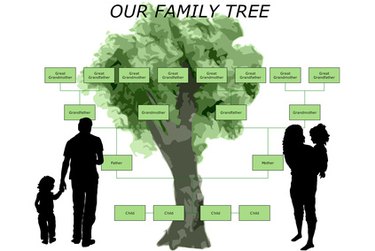
We often associate those belonging to a certain generation to have their own cultural ideals and philosophies. In a family, the length of a generation is defined as the age difference between a parent and her child or the age of a parent when she has a child. The interval is generally said to be 25 years, although presently it is closer to 30 years, whereas in primitive times it was closer to 20 years. To calculate a human generation, you will get different results, depending on whether you use a mother, a father or both as a basis, or whether you are calculating the age difference between the first born and his parents or finding an average for all children.
Step 1
Consider first the generation interval between you and your parents. Determine the age of your mother when she had you and your siblings. Let's say she was 27 when she had you, 29 when she had your brother, and 31 when she had your sister. Add these three ages together and divide by three. This determines that the average age your mom was when she had children was 29. Do the same for your father's age when you and your siblings were born. Let's say that average was 35 years of age. Add your mother's and your father's age and divide by two. The answer, 32 years of age, is the overall average generation interval for your immediate family.
Video of the Day
Step 2
Research your family tree to calculate an average generation for your family line. Try to find information on at least six generations back, or your great-great-great-great-grandparents. Determine the date of birth of the farthest known generation back; you do not have to determine the date of birth of generations in between you and that ancestor.
Step 3
Subtract the year of birth of your ancestor from your own year of birth. For example, let's say your ancestor was born in 1800 and you were born in 1979. Subtract 1800 from 1979 which gives you 179 years. Now if this ancestor was six generations back, or what F.M. Lancaster, author of the Genetic and Quantitative Aspects of Genealogy, describes as six connecting links between you and that ancestor, than divide 179 years by six. This yields an answer of 29.8333 or a generation interval rounded up to 30 years.
Step 4
Perform more calculations working with same ancestral generation. Calculate the generation interval based on both males and females of that time. Determine the male average, the female average and the overall average.
Video of the Day